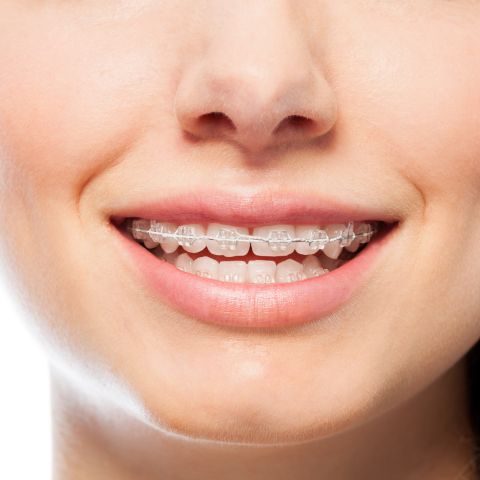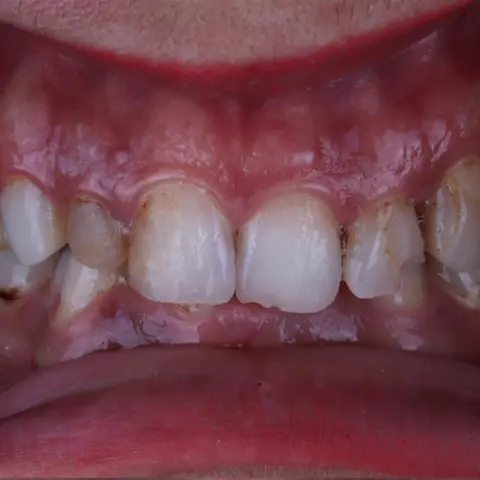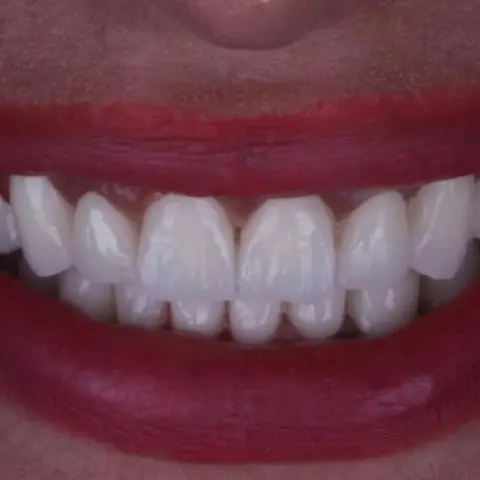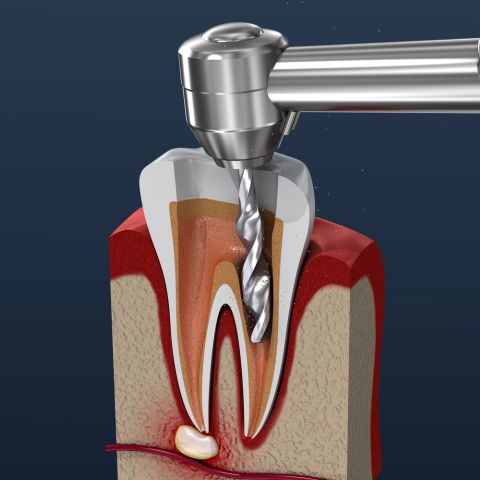

Orthodontics is a specialized branch of dentistry that addresses dental and facial irregularities. It aims to align teeth and jaws for better function and aesthetics. Common issues treated include overbites, underbites, spacing problems, and tooth crowding. Orthodontists, having undergone additional training beyond dental school, use devices like braces, clear aligners, and retainers to correct these malocclusions, leading to improved oral health and a more confident smile.
Pros of Orthodontic Treatment:
- Improved Aesthetics: Straightened teeth and a corrected bite can significantly enhance one's smile and facial profile.
- Better Oral Function: Aligned teeth can improve biting, chewing, and speaking functions.
- Decreased Dental Wear: Properly aligned teeth reduce abnormal wear and tear, which can prevent future dental issues.
- Improved Oral Hygiene: Straight teeth are easier to clean, leading to reduced risks of cavities and gum disease.
- Boosted Confidence: A well-aligned smile can enhance self-esteem and social confidence.
- Prevention of Oral Issues: Addressing orthodontic problems can prevent potential issues like TMJ disorders or difficulties in oral hygiene maintenance.
Cons of Orthodontic Treatment:
- Duration of Treatment: Orthodontic treatments, especially braces, can require an extended commitment, often lasting several years.
- Discomfort: Some patients may experience discomfort or mild pain, especially after adjustments during the treatment.
- Oral Hygiene Challenges: Braces and other appliances may pose challenges for oral hygiene, requiring more meticulous cleaning routines.
- Dietary Restrictions: With certain treatments like braces, patients might need to avoid specific foods that could damage the apparatus.
- Cost: Orthodontic treatments can be costly, though this varies by region and specific treatment types.
- Aesthetic Concerns: Some people may feel self-conscious wearing visible orthodontic devices, though there are less noticeable options available nowadays.
- Traditional Metal Braces: These are the standard stainless steel braces that have been used for decades. They consist of brackets adhered to teeth and connected by an archwire, which is adjusted over time to move teeth into place.
- Ceramic Braces: Functionally similar to metal braces, ceramic braces use tooth-colored or clear brackets, making them less noticeable. They're popular among adults and older teenagers for their aesthetic appeal.
- Lingual Braces: These braces are fixed to the back of the teeth (lingual side), making them virtually invisible to others. They function similarly to traditional braces but might be more challenging to clean.
- Self-Ligating Braces: These braces use a different type of bracket that doesn't require the small elastic bands used on traditional braces. This design can reduce friction, potentially leading to faster treatment times and fewer adjustments.
- Clear Aligners (e.g., Invisalign): Clear aligners are virtually invisible plastic trays custom-made to fit the patient's mouth. They gradually shift teeth and are removable, making them a popular choice for adults. Patients wear a series of aligners, each for about two weeks, to progress through their treatment.
- Palatal Expanders: These are devices used mainly in children and adolescents to widen the upper jaw, creating more space for teeth to grow properly.
- Retainers: After completing orthodontic treatment, retainers are used to keep teeth in their new position. They can be removable or fixed and are essential to prevent teeth from drifting back to their original positions.
- Functional Appliances: These are used to correct jaw growth discrepancies in growing children. Devices like the Twin Block or Bionator can help align the upper and lower jaws to improve bite and profile.
- Headgear: Less commonly used today but still effective in certain cases, headgear is an external appliance that exerts pressure to guide the growth of the face and jaws.
Determining suitability for orthodontic treatment involves several factors. Generally, you might be a good candidate if:
- Dental and Facial Irregularities: If you have misaligned teeth (crooked, crowded, or spaced apart), an overbite, underbite, crossbite, or other jaw alignment problems, you could benefit from orthodontic treatment.
- Oral Health: Good oral health is crucial before starting any orthodontic treatment. If you have untreated dental issues like cavities or gum disease, they should be addressed first.
- Age: While orthodontic treatment can be beneficial at nearly any age, there are optimal times to address certain issues. For example, children and teenagers often have more malleable jawbones, making treatments like palatal expansion more effective. However, adults can still undergo orthodontic treatment to correct dental issues, though some conditions might take longer to treat or require different approaches.
- Commitment: Orthodontic treatment requires a commitment to follow the orthodontist's instructions carefully, maintain good oral hygiene, and attend regular adjustment appointments. If you're prepared for this commitment, you're more likely to see successful results.
- No Habits that can hinder Treatment: Habits like regular tobacco use, excessive alcohol consumption, or persistent teeth grinding can negatively impact the success of orthodontic treatment.
- Overall Health: Some medical conditions or medications can affect the movement of teeth or the health of the oral tissues. It's essential to discuss your medical history with your orthodontist.
The orthodontic treatment process varies depending on the type of treatment and individual patient needs. However, a general outline of the process is as follows:
1. Initial Consultation: The first step involves a thorough evaluation where the orthodontist will take dental x-rays, photographs, and possibly impressions of your teeth. This allows them to diagnose specific orthodontic issues and discuss potential treatment options.
2. Treatment Plan: Based on the initial assessment, the orthodontist will design a customized treatment plan, discussing the type of device best suited, expected results, potential risks, and the estimated duration of treatment.
3. Device Placement: Once a treatment route is chosen, the required orthodontic device, whether braces, aligners, or other appliances, will be placed or provided. For braces, this involves bonding brackets to the teeth and connecting them with archwires.
4. Adjustment Periods: Throughout the treatment, regular visits to the orthodontist (typically every 4-8 weeks) are necessary for adjustments. For braces, this means tightening or changing the wires to progress the movement of teeth. For aligner treatments, it involves transitioning to the next set in the series.
5. Monitoring: The orthodontist will monitor progress throughout, making any necessary changes to the treatment plan.
6. Completion and Retention: Once the desired alignment is achieved, braces or other devices will be removed. Most patients will need to wear retainers to ensure teeth don't shift back to their initial positions. Initially, retainers are worn full-time, gradually transitioning to nighttime wear.
7. Follow-up Visits: Periodic check-ups with the orthodontist may be needed, especially in the initial phase after active treatment, to ensure teeth are stable in their new positions.
The general timeframe for orthodontic treatment varies widely based on the severity of the dental issue, the type of treatment chosen, and patient compliance. On average:
- Metal or ceramic braces: 18-24 months, though simple cases can be shorter, and complex cases can take over 3 years.
- Clear aligners (e.g., Invisalign): 12-18 months, but this can vary.
- Functional appliances and palatal expanders: Varies depending on the case, but often several months.
During Orthodontic Treatment:
- Regular Brushing: Brush after every meal to remove food particles trapped in braces. Use a soft-bristled toothbrush, and consider getting an orthodontic toothbrush or an interdental brush to navigate around brackets and wires more effectively.
- Flossing: Floss daily using waxed floss, as unwaxed floss can snag on braces. Floss threaders or orthodontic floss can be beneficial to get between braces.
- Rinse with Mouthwash: Use a fluoride mouthwash to strengthen teeth and reduce the risk of cavities.
- Dietary Adjustments: Avoid hard, sticky, or chewy foods that can damage braces. Examples include popcorn, nuts, sticky candies, hard candies, and ice.
- Regular Check-ups: Continue visiting your dentist for routine cleanings and check-ups, in addition to your orthodontic appointments.
- Wear Protective Gear: If you're involved in sports, wear an orthodontic mouthguard to protect both your braces and mouth.
- Avoid Sugary and Acidic Foods: These can increase the risk of tooth decay, especially when wearing braces which can trap food particles.
After Orthodontic Treatment:
- Retainer Care: Clean your retainer every time you brush your teeth. Use a toothbrush and lukewarm (never hot) water. Occasionally, soak it in a denture or retainer cleaning solution.
- Regular Wear: Wear your retainer as prescribed by your orthodontist. It's essential for preventing teeth from shifting back to their initial positions.
- Regular Dental Check-ups: Continue with routine dental visits to monitor oral health and ensure there are no issues after the treatment.
- Maintain Good Oral Hygiene: Even without braces, continue practicing thorough brushing and flossing to keep teeth and gums healthy.
- Whitening (if desired): If you notice any discoloration after removing braces, discuss teeth whitening options with your dentist.
- Monitor Changes: If you notice shifts in your teeth's alignment, contact your orthodontist promptly.
Caring for your teeth during and after orthodontic treatment is crucial for achieving lasting, optimal results. Proper maintenance ensures that the time and investment put into orthodontic treatment are well worth the beautiful and healthy smile you attain.
Turkey has emerged as a leading destination for medical and dental procedures, drawing numerous international patients due to its fusion of quality healthcare and competitive pricing. The reduced cost of living in Turkey, coupled with the high volume of patients and the competitive nature of the medical tourism market, means that clinics can offer treatments at attractive rates without compromising on the quality of care.
In terms of orthodontic treatments, here's a general price comparison: In Western Europe, traditional braces typically range from €3,000 to €6,000, while clear aligners like Invisalign might cost between €3,500 to €7,000. In the USA, the price for traditional braces is usually around $3,000 to $7,000, with clear aligners ranging from $3,500 to $8,000. Meanwhile, in Turkey, patients can expect to pay approximately €1,000 to €2,500 for traditional braces and €1,500 to €4,000 for clear aligners. These figures underscore Turkey's appeal as a cost-effective choice for orthodontic treatments. Still, as always, patients should research and select clinics with a strong reputation for quality and safety.
Elara Medical Tourism stands out as a top choice for those seeking orthodontic treatment in Turkey, and here's why:
1. Expertise and Quality: Elara Medical Tourism partners with highly trained and experienced orthodontists, ensuring patients receive top-tier care tailored to their needs. Our affiliated clinics utilize the latest in orthodontic technology and techniques, aligning with international standards of excellence.
2. Comprehensive Care: We understand that medical tourism involves more than just the procedure. From the initial consultation to post-treatment care, our team ensures a seamless experience. This includes assisting with travel arrangements, accommodation, and any other logistics that enhance your stay in Turkey.
3. Affordability: Leveraging the competitive pricing landscape of Turkey, Elara Medical Tourism offers orthodontic solutions that are both high in quality and cost-effective. Our transparent pricing ensures no hidden costs or surprises, giving patients peace of mind.
4. Personalized Attention: Every patient is unique, and our approach reflects this belief. We provide personalized treatment plans, ensuring that individual needs and expectations are met or exceeded.
5. Trust and Integrity: Our reputation has been built on trust and transparency. With numerous success stories and positive testimonials, you can be confident in your choice to partner with Elara Medical Tourism for your orthodontic journey.
6. Multilingual Support: Catering to a global clientele, our team offers support in various languages, ensuring clear communication and understanding throughout your treatment process.
By choosing Elara Medical Tourism for your orthodontic needs in Turkey, you're not only opting for world-class medical care but also a holistic experience that prioritizes your comfort, safety, and satisfaction.




